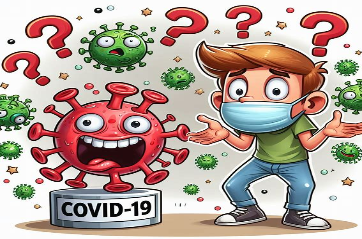Yimiao Zhao , Qiongdan Liang , Zhendong Jiang, et. al, May 09, 2024DOI: https://doi.org/10.1016/ j.lanwpc.2024.101086
Summary
Background
A variety of symptoms, particularly cognitive, psychiatric and neurological symptoms, may persist for a long time among individuals recovering from COVID-19. However, the underlying mechanism of these brain abnormalities remains unclear. This study aimed to investigate the long-term neuroimaging effects of COVID-19 infection on brain functional activities using resting-state functional magnetic resonance imaging (rs-fMRI).
Methods
Fifty-two survivors 27 months after infection (mild-moderate group: 25 participants, severe-critical: 27 participants), from our previous community participants, along with 35 healthy controls, were recruited to undergo fMRI scans and comprehensive cognitive function measurements. Participants were evaluated by subjective assessment of Cognitive Failures Questionnaire-14 (CFQ-14) and Fatigue Scale-14 (FS-14), and objective assessment of Montreal Cognitive Assessment (MoCA), N-back, and Simple Reaction Time (SRT). Each had rs-fMRI at 3T. Measures such as the amplitude of low-frequency fluctuation (ALFF), fractional amplitude of low-frequency fluctuations (fALFF), and regional homogeneity (ReHo) were calculated.
Findings
Compared with healthy controls, survivors of mild-moderate acute symptoms group and severe-critical group had a significantly higher score of cognitive complains involving cognitive failure and mental fatigue. However, there was no difference of cognitive complaints between two groups of COVID-19 survivors. The performance of three groups was similar on the score of MoCA, N-back and SRT. The rs-fMRI results showed that COVID-19 survivors exhibited significantly increased ALFF values in the left putamen (PUT.L), right inferior temporal gyrus (ITG.R) and right pallidum (PAL.R), while decreased ALFF values were observed in the right superior parietal gyrus (SPG.R) and left superior temporal gyrus (STG.L). Additionally, decreased ReHo values in the right precentral gyrus (PreCG.R), left postcentral gyrus (PoCG.L), left calcarine fissure and surrounding cortex (CAL.L) and left superior temporal gyrus (STG.L). Furthermore, significant negative correlations between the ReHo values in the STG.L, and CFQ-14 and mental fatigue were found.
Interpretation
This long-term study suggests that individuals recovering from COVID-19 continue to experience cognitive complaints, psychiatric and neurological symptoms, and brain functional alteration. The rs-fMRI results indicated that the changes in brain function in regions such as the putamen, temporal lobe, and superior parietal gyrus may contribute to cognitive complaints in individuals with long COVID even after 2-year infection.
